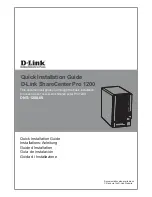
•
The
context_save
and
context_retrieve
Tcl command extensions that are used to save Tcl variables for use by
other policies.
•
Use of the SMTP library (to send e-mail notifications) or the CLI library (to run CLI commands) from a policy.
Step 8
Check the entry status to determine if a policy has previously run for this event.
If the prior policy is successful, the current policy may or may not require execution. Entry status designations may use
one of three possible values: 0 (previous policy was successful), Not=0 (previous policy failed), and Undefined (no
previous policy was executed).
Step 9
Check the exit status to determine whether or not to apply the default action for this event, if a default action exists.
A value of zero means do not perform the default action. A value of nonzero means perform the default action. The exit
status will be passed to subsequent policies that are run for the same event.
Step 10
Set Cisco Error Number (_cerrno) Tcl global variables.
Some EEM Tcl command extensions set a Cisco Error Number Tcl global variable _cerrno. Whenever _cerrno is set,
four other Tcl global variables are derived from _cerrno and are set along with it (_cerr_sub_num, _cerr_sub_err,
_cerr_posix_err, and _cerr_str).
For example, the
action_syslog
command in the example below sets these global variables as a side effect of the command
execution:
Example:
action_syslog priority warning msg
“
A sample message generated by action_syslog
if {$_cerrno != 0} {
set result [format "component=%s; subsys err=%s; posix err=%s;\n%s" \
$_cerr_sub_num $_cerr_sub_err $_cerr_posix_err $_cerr_str]
error $result
}
Step 11
Save the Tcl script with a new filename, and copy the Tcl script to the device.
Embedded Event Manager policy filenames adhere to the following specification:
•
An optional prefix--Mandatory.--indicating, if present, that this is a system policy that should be registered
automatically at boot time if it is not already registered. For example: Mandatory.sl_text.tcl.
•
A filename body part containing a two-character abbreviation (see
EEM Policies and Cisco Error Number, on
page 1788
) for the first event specified; an underscore character part; and a descriptive field part further identifying
the policy.
•
A filename suffix part defined as .tcl.
For more details, see the
Cisco File Naming Convention for EEM, on page 1770
.
Copy the file to the flash file system on the device--typically disk0:. For more details about copying files, see the
“
Using
the Cisco IOS File System
”
chapter in the Cisco IOS Configuration Fundamentals Configuration Guide .
Copy the file to the flash file system on the device--typically bootflash:. For more details about copying files, see the
“
Using the Cisco IOS File System
”
chapter in the Cisco IOS Configuration Fundamentals Configuration Guide .
Step 12
configure terminal
Enters global configuration mode.
Consolidated Platform Configuration Guide, Cisco IOS Release 15.2(4)E (Catalyst 2960-X Switches)
1794
How to Write Embedded Event Manager Policies Using Tcl
Summary of Contents for Catalyst 2960 Series
Page 96: ......
Page 196: ......
Page 250: ......
Page 292: ......
Page 488: ......
Page 589: ...P A R T VI Cisco Flexible NetFlow Configuring NetFlow Lite page 509 ...
Page 590: ......
Page 619: ...P A R T VII QoS Configuring QoS page 539 Configuring Auto QoS page 645 ...
Page 620: ......
Page 750: ......
Page 1604: ......
Page 1740: ......
Page 2105: ...P A R T XII Configuring Cisco IOS IP SLAs Configuring Cisco IP SLAs page 2025 ...
Page 2106: ......
Page 2118: ......
Page 2164: ......
















































